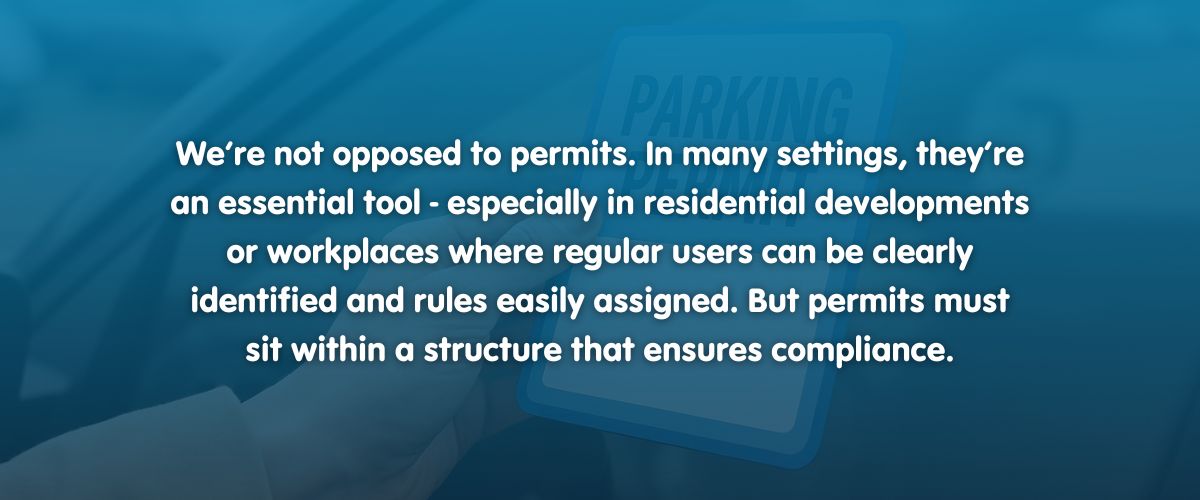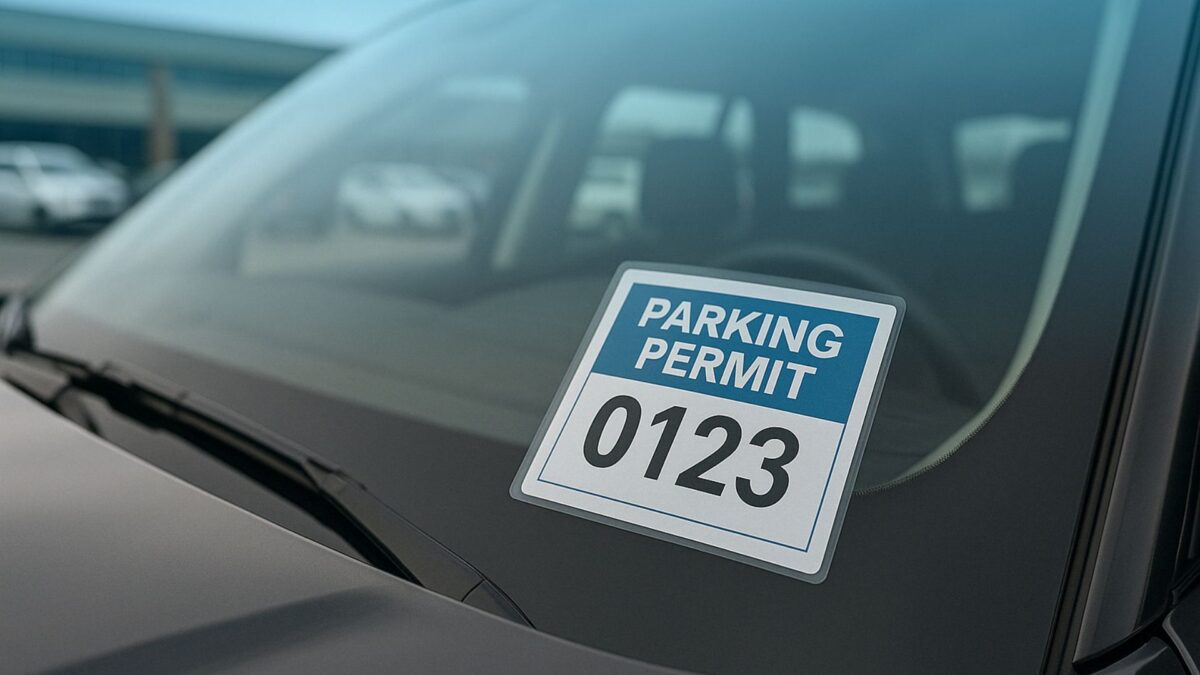When a permit system isn’t enough: Why some car parks still need something more

When is a Barrier Not a Barrier? When it’s the Problem, not the Solution.
19/03/2025
Is your car park a convenience or an inconvenience? Enhancing the shopper’s experience
16/04/2025There’s a tempting simplicity in the idea of a permit-only car park. On paper, it looks efficient: if you know who’s allowed to park and who isn’t, just issue permits and let the system run itself. No one has to pay, nothing needs to be enforced, and the presence of a permit on a dashboard (or in a digital database) is enough to maintain order. Unfortunately, reality tends to be messier. Permits might be part of a car park’s solution - but they are almost never the whole answer.
The assumption that permits alone can manage a site overlooks two key things: human behaviour, and the need for consistent deterrent. Permits are, at their best, a record of who should be there. They are not a deterrent to those who shouldn’t. When drivers learn that there is no consequence for parking without one, the value of the system begins to unravel. If the only mechanism in place is a permit list and no one is checking it, the rules become optional.

This is especially true on residential or mixed-use sites where visitors come and go, where deliveries happen at unpredictable times, and where spaces are often limited. In these contexts, a permit-only model doesn’t just struggle - it often creates more tension than it resolves. Residents begin to complain that others aren’t playing by the rules. Visitors park where they shouldn’t. Contractors overstay. And all the while, the landowner or managing agent is left fielding complaints with no meaningful way to act.
Digital permit platforms offer some advantages over physical permits. They reduce fraud, simplify administration, and make it easier to manage multiple users. Real-time access, integration with access control systems, and tailored rules for different user groups can make them feel more dynamic and responsive than traditional permits. But even digital systems need a mechanism for enforcement to be effective. If a system records that someone isn’t authorised to park, but there is no meaningful response to that breach, then the system quickly loses authority. Without enforcement, a permit register becomes a passive log - useful for reference, but meaningless in practice.
This lack of deterrence opens the door to site misuse. Once word spreads that a permit-only car park has no enforcement, behaviour changes. Drivers who once complied begin to test the system. Tenants who paid for permits question why they bothered.
External users take advantage.
All of this places pressure on whoever is responsible for the land. And in many cases, that pressure turns to reputational risk - complaints from residents, tension with clients, or emails from users questioning the fairness of the entire arrangement.
These situations are made worse by unclear signage or an overreliance on assumption. Car parks are often used by people who have never visited before. They may be contractors, agency staff, delivery drivers, or short-term visitors. If the system is not immediately clear - if it’s not obvious that a permit is required, how to obtain one, or what the consequences of failing to do so might be - confusion is inevitable. And confusion, as ever, breeds complaints.
At Park & Control, we’ve been asked to review dozens of permit-only car parks that are no longer functioning as intended. Sometimes, the issue is simply one of design. The signs are there, but they’re not prominent. The layout doesn’t naturally guide users through the system. The process for applying for a permit is too complex or poorly explained. Other times, the issue lies in assumptions made at the outset. The site was never suitable for a permit-only model, or the client underestimated the level of public traffic it would receive.

We’re not opposed to permits. In many settings, they’re an essential tool - especially in residential developments or workplaces where regular users can be clearly identified and rules easily assigned. But permits must sit within a structure that ensures compliance. That usually means some form of monitoring. In high-volume or higher-risk sites, this might involve ANPR with real-time permit database integration. In others, it might mean mobile patrols that can check registrations against a list. What matters is not the method, but the fact of visibility. Rules need to be enforced - not in a heavy-handed way, but with consistency and clarity.
There are, of course, car parks where permit-only models function well without formal enforcement. These are typically small, self-contained, low-traffic environments with a well-known and stable user base. But they are the exception. Most sites today face a more fluid reality - one in which enforcement cannot be assumed, and where good behaviour depends on a combination of clarity, deterrent, and oversight.
There is also a financial reality to acknowledge. Permits create a binary system: either you have one, or you don’t. But they rarely generate income unless they are sold, and even then, revenue is usually limited. For clients looking to recoup costs or fund ongoing management, a hybrid model - where permits are offered to regular users but visitors pay through a digital payment solution - can offer a better balance. This also introduces flexibility: different rules for different groups, with enforcement that supports them all.
The most successful car park management strategies tend to be layered. They use permits to provide structure, digital tools to simplify administration, signage to guide behaviour, and enforcement to ensure rules are followed. None of these elements can carry the whole burden on their own. Together, they create a system that works - not just in theory, but in daily practice.
If your site is relying solely on permits and you’re starting to see cracks - whether in compliance, complaints, or reputational noise - it may be time to rethink the approach. That doesn’t necessarily mean abandoning permits. But it might mean strengthening the framework around them, making enforcement more visible, or reintroducing clarity where it’s been lost.
A permit is a signal. It tells users what’s expected. But without a system that reinforces those expectations, it becomes just that - a signal. Car parks need more than signals. They need systems that work.






